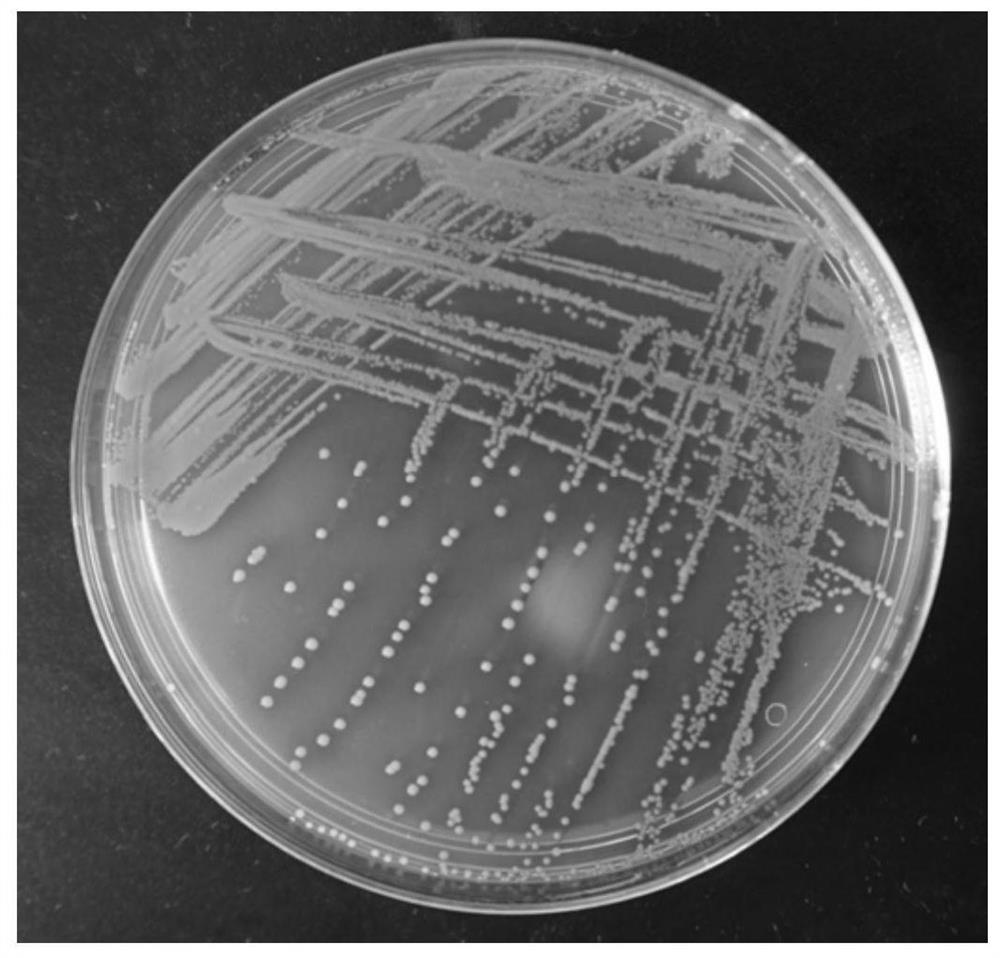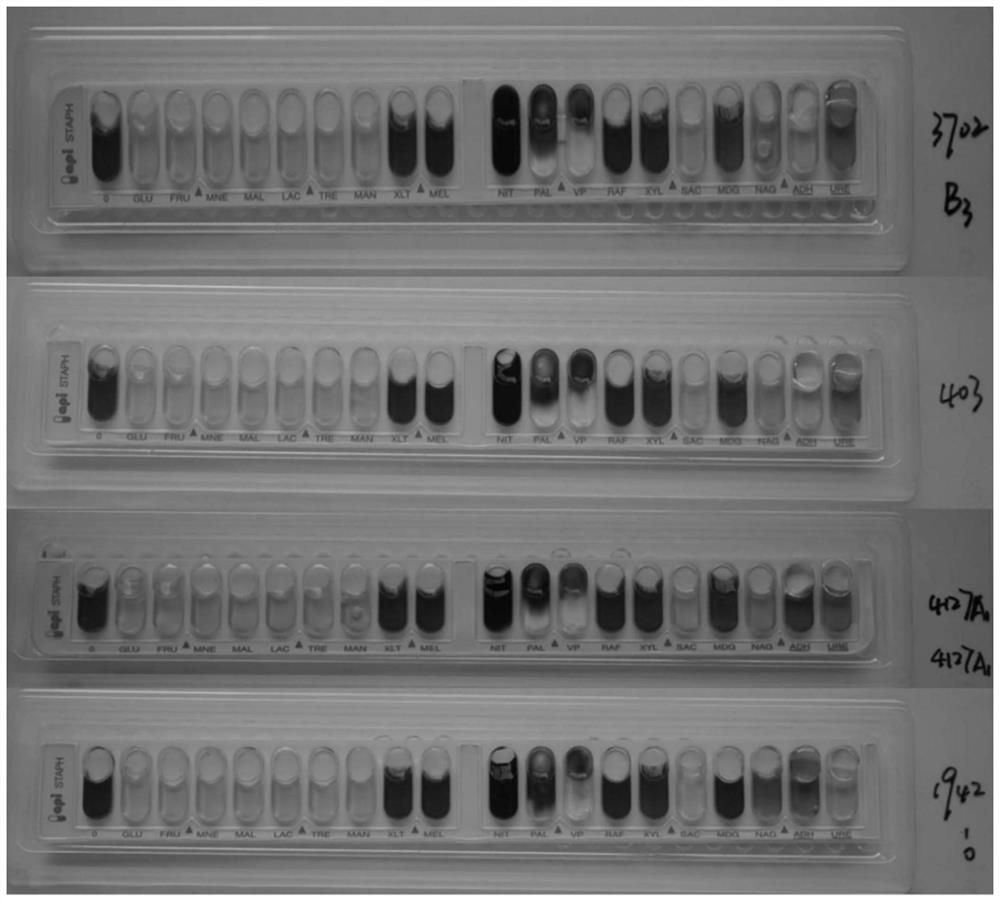Specific molecular target containing staphylococcus aureus standard strains as well as detection and application thereof
A staphylococcus, molecular target technology, applied in the field of bioengineering, can solve the problems of slow dissolution, automatic counting of colonies that affect the appearance, and scattered on the surface of the plate, etc.
- Summary
- Abstract
- Description
- Claims
- Application Information
AI Technical Summary
Problems solved by technology
Method used
Image
Examples
Embodiment 1
[0036] Isolation, identification and cultivation of embodiment 1 Staphylococcus aureus bacterial strain
[0037] Qualitative and quantitative tests are carried out on the collected samples at the same time, and the test methods are slightly adjusted on the basis of the national standard "Food Microbiological Inspection" GB4789.10-2010. Take 25g (mL) of the sample and add it to a sterile homogeneous bag of 225mL normal saline and shake it evenly to make a 1:10 sample solution, and take 1mL from it and add it to 9mL of 10% sodium chloride tryptone soybean broth In a test tube, a sample solution of 1:100 was prepared, and a sample solution of 1:1000 was prepared according to the above method; each gradient had 3 parallels, and the sample solution was placed in a constant temperature incubator at 37°C for 48 hours, and each The sample solutions with gradient concentrations were streaked on the culture medium of Staphylococcus aureus chromogenic plate, and cultured at 37°C for 24-4...
Embodiment 2
[0043] Physiological and biochemical characteristics and drug sensitivity characteristics of embodiment 2 Staphylococcus aureus strains
[0044] Staining microscopic examination: smear suspicious colonies, perform Gram staining, and observe the morphology under the microscope. Staphylococcus aureus is Gram-positive, and it forms a prototype grape bunch under the microscope ( figure 2 ).
[0045] Plasma coagulation enzyme test: Inoculate a single colony into 5mL BHI culture medium and incubate at 37°C for 18-24h. Aspirate 1 mL of the culture solution, add it to the plasma coagulase, and incubate at 37°C. After 2.5 hours, observe whether it coagulates every hour. If it does not coagulate after 6 hours, cultivate overnight and then observe and verify.
[0046] API Staph identification: scrape a single pink colony from the chromogenic plate, prepare a cell suspension with appropriate turbidity with physiological saline, and use API Staph biochemical identification reagent stri...
Embodiment 3
[0050] Molecular genetic background analysis of embodiment 3 Staphylococcus aureus bacterial strains
[0051] Multilocus sequence typing (MLST), staphylococcal protein A (SPA) typing, SCCmec typing and related gene detection were carried out on Staphylococcus aureus strains respectively.
[0052] (1) Experimental method
[0053] MLST typing is mainly based on the sequence analysis of seven S. aureus housekeeping genes (arcC, aroE, glpF, gmk, pta, tpi, and yqil). Primers and amplification methods refer to previous literature reports. The 7 pairs of primers used were synthesized by Beijing Liuhe Huada Gene Technology Co., Ltd. (see Table 3 for primer sequences). PCR amplification conditions were as follows: pre-denaturation at 94°C for 5 min, denaturation at 94°C for 30 s, annealing at 55°C for 30 s, extension at 72°C for 2 min, and 35 cycles; finally, extension at 72°C for 10 min. The reaction system (25 μL) contained: 12.5 μl 2×DreamTaq mastermix, 8.5 μl ultrapure water, 80...
PUM
 Login to View More
Login to View More Abstract
Description
Claims
Application Information
 Login to View More
Login to View More - R&D
- Intellectual Property
- Life Sciences
- Materials
- Tech Scout
- Unparalleled Data Quality
- Higher Quality Content
- 60% Fewer Hallucinations
Browse by: Latest US Patents, China's latest patents, Technical Efficacy Thesaurus, Application Domain, Technology Topic, Popular Technical Reports.
© 2025 PatSnap. All rights reserved.Legal|Privacy policy|Modern Slavery Act Transparency Statement|Sitemap|About US| Contact US: help@patsnap.com



